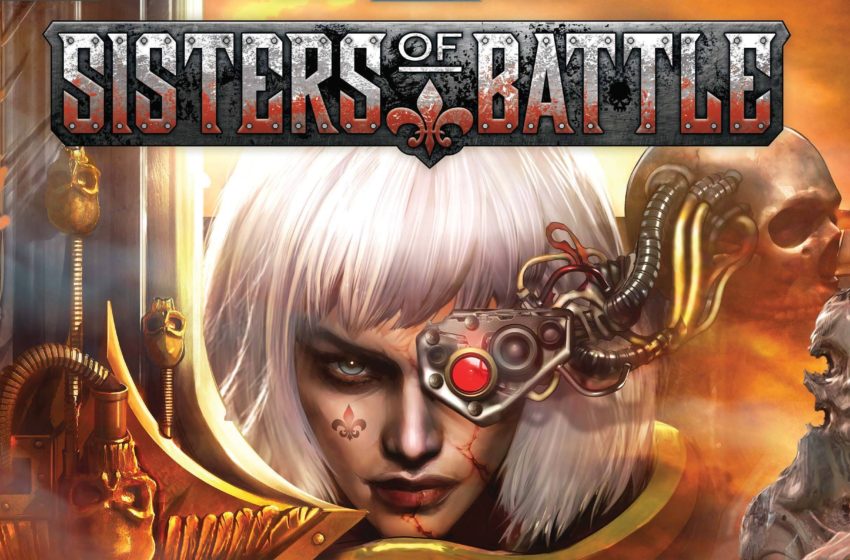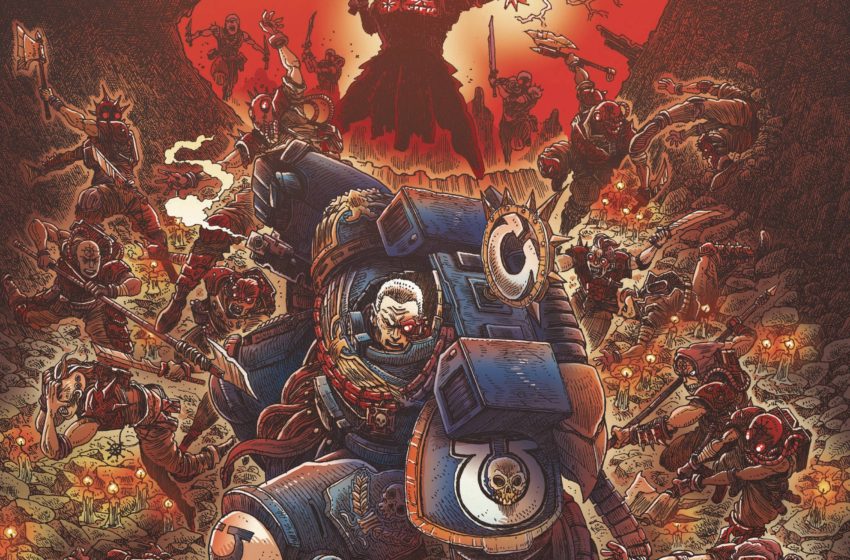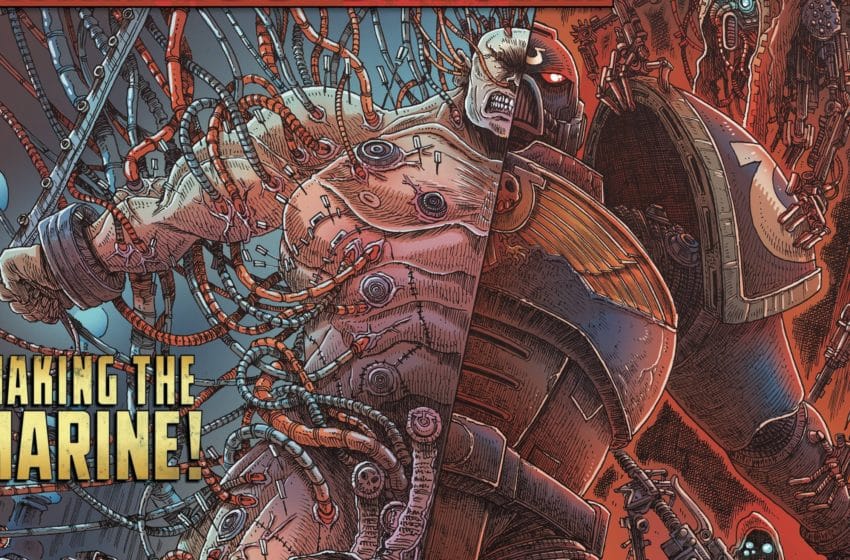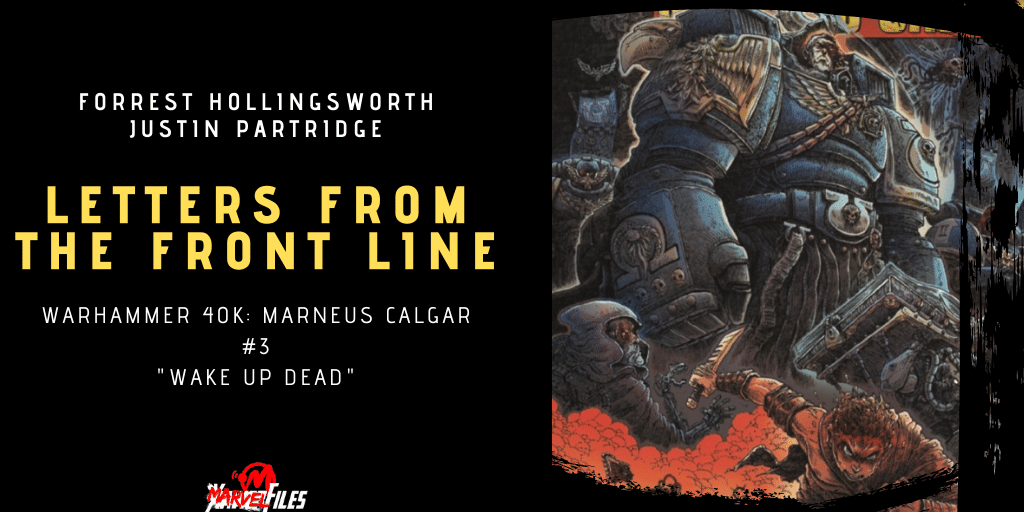Writing by Torunn Gronbekk, art by Edgar Salazar, color by Arif Prianto, letters by Clayton Cowles, design by Joe Sabino

Throwing readers into the trenches of the Imperium of Man’s infernal, eternal war with Chaos, sink or swim, Torunn Grønbekk’s and artist Edgar Salazar’s take on the Warhammer 40,000 universe with the first issue of Sisters of Battle following a small outfit of Adepta Sororita (Order of Our Martyred Lady) on the precipice of a full on heretical uprising is a dense, but deserved one.
Rewarding for existing fans of the tabletop game and its expanded media enterprise, and intriguing enough for the uninitiated to stick around, Grønbekk delivers a story that is equal parts nuts and bolt throwing warfare, and political and religious intrigue, imbued with importance by the appearance of Canoness Veridyan (who featured on the cover of the original Sisters of Battle Codex) as her and her attending sisters attempt to find the source of a chaotic infestation on mining planet Siscia. I am again, impressed by just how much lore and world building and revision Games Workshop is letting Marvel get away with here, but Grønbekk treats the whole thing with obvious, appreciated reverence.
It’s a straightforward first issue that finds the Sisters overcome as an enemy they never could’ve, or should’ve expected enters the fray, and admittedly it’s one that may feel pretty surface level to those already familiar with the combatants at hand (it’s very easy to guess which Chaos God is at work here, for example) but it also gives the setting an appropriate grounding that Kieron Gillen’s take on one of the most famous, important, and lofty Warhammer characters of all time in Marneus Calgar missed.
Here is the sound of war hymns, the counting of precious bolts, the structure and significance of prayer that a story following regularly regimented troops in this doomed universe demands. It’s imbued with culture and personality, individual feebleness and espionage that acts as a good, lore-dense but equally effortless counterbalance to Gillen’s first volley, and one that helps expand the universe in realistic ways for new fans, hints of something amiss under an Imperial Inquisitor’s eye included. You get a sense of importance, of the scale and the factions involved even if the jargon flies like bolt fire over your head.
The balance of the lettering: hymns, dialogue, narration, transcription against the weight and presence of the Sisters, the relative weakness of Siscia’s citizens, the impossibly imposing Chaos implies a degree of consideration and synergy on every level of the book that is immediately appreciable. Salazar’s kinetic art is especially well paired with Prianto’s colors which do a good job of shifting and setting the tone from the ground level brown, orange, dreary Sisters’ fight to the tense blue-green inquisitorial conversation playing out above…and most importantly to the purple-hued heresy taking place below.
If there’s one detraction it’s that there’s too many characters – upwards of ten – introduced for a first issue to really tell who’s important, but they’ll all die soon enough. For now, I am eagerly looking forward to the war marching on next month.
Forrest is an experimental AI that writes and podcasts about comic books and wrestling coming to your area soon.






